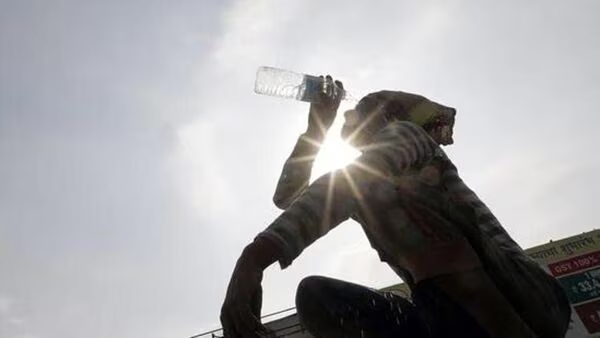On Wednesday, a weather station in Delhi reported a maximum temperature of 52.9° Celsius. This is the highest ever—not just for the capital, but for all of India. As anything above 50° is rare even during intense heat waves, the reading left observers agape. Since it was an outlier among other mercury readings across Delhi, a central minister said that the weather department has been asked to check if the thermometer was okay. Whether or not it has its notches correct, the scorching heat this year makes anything around the 50° mark seem believable.
The unprecedented temperatures bring into sharp focus a lesser-known yet equally dangerous metric: wet-bulb temperature (WBT). Unlike regular temperatures, WBT takes into account humidity, which dramatically impacts human ability to cope with heat. The concept, once of interest primarily to scientists and meteorologists, has now emerged as a critical measure of human survivability in the face of climate change.
Understanding Wet-Bulb Temperature
Wet-bulb temperature is the lowest temperature to which air can be cooled by evaporating water into it. It is measured by wrapping a wet cloth around the bulb of a thermometer and blowing air over it. WBT is a combined metric of heat and humidity, and it effectively indicates how efficiently our bodies can cool down through sweating. When both temperature and humidity are high, the air’s capacity to absorb additional moisture diminishes, hindering the evaporation of sweat and thus, our primary mechanism for cooling.
A WBT of 35°C is considered the limit of human survivability for a few hours of exposure. At this threshold, even healthy people sitting in the shade, with access to water and wearing minimal clothing, would not be able to survive. This makes WBT a crucial metric for assessing the risk posed by heatwaves, especially as global temperatures continue to rise.
The Reality of Rising WBTs
Recent research indicates that some regions of the world are already approaching critical WBT thresholds. Parts of South Asia, the Persian Gulf, and the Red Sea have seen WBTs nearing 35°C. For India, a country characterized by high population density and significant regional humidity, rising WBTs pose a severe threat to public health and well-being.
In urban areas like Delhi, the combination of heat and high levels of pollutants can exacerbate the effects of extreme temperatures. The urban heat island effect—where built-up areas are significantly warmer than their rural surroundings—further elevates temperatures, making cities like Delhi particularly vulnerable.
Human Impact and Adaptation Challenges
High WBTs have a direct and immediate impact on human health. Heat stress can lead to heat exhaustion, heatstroke, and exacerbate existing health conditions, particularly cardiovascular and respiratory diseases. Vulnerable populations, including the elderly, children, and those with pre-existing health conditions, are at heightened risk.
Beyond health, high WBTs affect economic productivity. Outdoor laborers, who form a significant portion of India’s workforce, face increased health risks and reduced productivity as temperatures rise. The agricultural sector, already challenged by unpredictable weather patterns, suffers further as extreme heat can damage crops and strain water resources.
Adaptation measures are critical but challenging. Urban planning needs to incorporate green spaces, enhance ventilation, and utilize reflective building materials to mitigate heat. Public awareness campaigns about hydration, heat safety, and the importance of shade can help individuals better cope with high temperatures. However, these measures require significant investment and coordination, often challenging in densely populated and resource-constrained areas.
The Need for Urgent Action
Addressing the rising threat of wet-bulb heat requires a multi-faceted approach:
1. *Enhancing Heat Monitoring and Early Warning Systems*
Improving meteorological infrastructure to provide accurate and timely warnings about extreme heat events is crucial. These systems can help communities prepare and take preventive actions to protect vulnerable populations.
2. *Investing in Resilient Infrastructure*
Developing infrastructure that can withstand extreme heat, such as heat-resistant buildings, shaded public spaces, and efficient cooling systems, is essential. Urban planning should prioritize green infrastructure to reduce the urban heat island effect.
3. *Public Health Interventions*
Strengthening public health systems to respond to heat-related illnesses is critical. This includes training healthcare providers, establishing cooling centers, and disseminating information about heat safety practices.
4. *Promoting Sustainable Practices*
Encouraging sustainable agricultural practices and water management can help mitigate the impact of extreme heat on food security. Investing in drought-resistant crops and efficient irrigation systems is crucial.
5. *Climate Mitigation Efforts*
While adaptation is necessary, long-term solutions must focus on mitigating climate change. Reducing greenhouse gas emissions through renewable energy adoption, energy efficiency, and sustainable transportation can help slow the pace of global warming and reduce the frequency and intensity of heatwaves.
The record-breaking temperatures in Delhi and the looming threat of critical wet-bulb temperatures underscore the urgent need for comprehensive strategies to combat extreme heat. As climate change continues to drive temperatures upward, the risks associated with high WBTs will only grow more severe. Policymakers, urban planners, healthcare providers, and communities must collaborate to implement effective adaptation and mitigation measures.
Ignoring the threat of wet-bulb heat is not an option. The human, economic, and environmental costs are too high. By prioritizing proactive measures and investing in resilient infrastructure, we can protect vulnerable populations, safeguard public health, and build a more sustainable and heat-resilient future. The time to act is now, before the next heatwave pushes us further into uncharted and perilous territory.
Disclaimer: The thoughts and opinions stated in this article are solely those of the author and do not necessarily reflect the views or positions of any entities represented and we recommend referring to more recent and reliable sources for up-to-date information.



